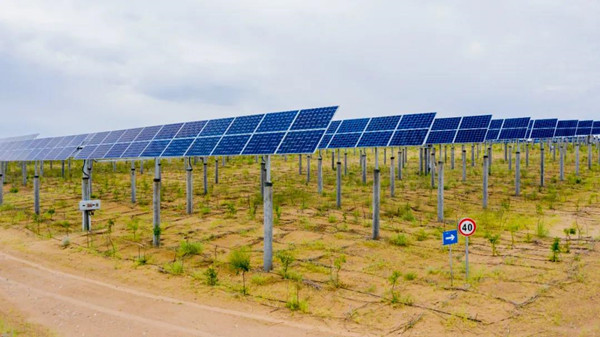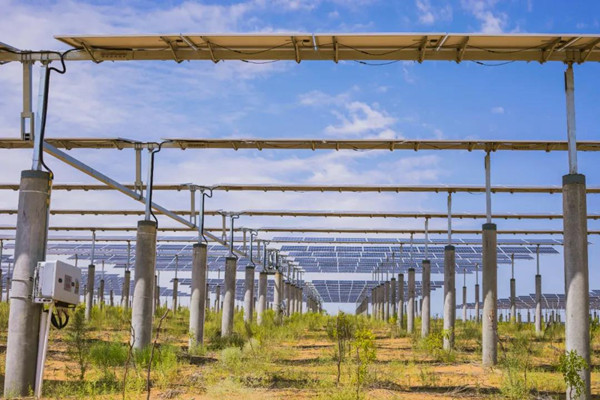A tree planting activity was held by China General Nuclear Power Corporation (CGN) at Shuofang photovoltaic (PV) power plant in the Kubuqi Desert in North China's Inner Mongolia Autonomous Region on June 5, the 50th World Environment Day.
Located in the hinterland of the desert, the plant has an installed capacity of 200,000 kilowatts and adopts a new model of desert treatment integrating PV and solar power, ecological restoration and tourism.
Various kinds of plants and herbs are grown under the PV plates, which can stabilize the sand and diversify local plant species.
The pattern solves the local power shortage problem by making full use of solar power and at the same time protects and increases vegetation coverage.
CGN has effectively controlled desertification of an area of 27,000 mu (about 1,800 hectares) in the region for the past two years.
The company now operates five PV plants in the Kubuqi Desert with a total installed capacity of 620,000 kW and annual power output of about 1.2 billion kilowatt-hours.
The power equals that produced by burning 440,000 tons of standard coal, a process that would release 1.1 million tons of carbon dioxide.

Plants and herbs are grown under the PV plates at CGN's PV power plant in the Kubuqi Desert in the Inner Mongolia Autonomous Region. [Photo/sasac.gov.cn]

Jujube trees are planted under the PV plates at CGN's PV power plant in the Kubuqi Desert in Inner Mongolia. [Photo/sasac.gov.cn]
(Executive editor: Wang Ruoting)